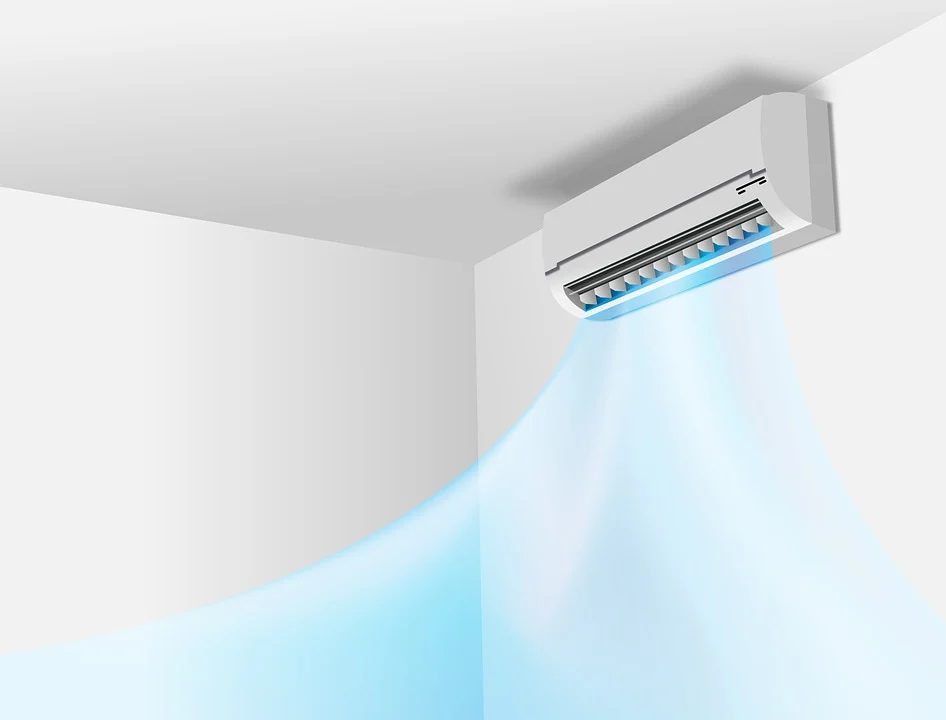
A room cooling unit commonly referred to as an air conditioner, is any device that cools the entire room or building by using air sources such as refrigerant, fuel-burning gases, or an air distributor which includes an air fan or air filter. The chilled air is drawn in through the inlet coils or evaporators. When humid air passes over the chilled coils of evaporators, damp moisture naturally condensates on the coils. That means that the cooling process in itself dehumidifies the indoor air. This means that the AC will be working regardless of whether it doesn't have sufficient refrigerants for handling the moisture. Two types of air conditioners are offered: central and portable. They differ in manner in which they regulate temperature. Gas mains power central air conditioner units. They're part the heating system. Condenser coils can be found at central places. Everything wiring and circuitry is contained in one unit. Portable air conditioning units make use of electricity to power their motors as well as compressor units. Due to the fact that they're usually placed outside it is essential that the unit regulates the humidity. Outside locations are often very dry, and the condition of the air is not ideal. To control temperature inside portable units the bypass valve can be utilized. A dehumidifier or dryer may be added to air to extract water. A closed-circuit device is one that makes use of refrigerant gas to keep the refrigerant gas cool until it reaches the coils of condensers. The refrigerant gas gets vaporized by the compressor's motor, by pushing it through a thin layer of refrigerant lined and is then placed within an outer shell. This protects it from becoming vaporized prior to reaching the coils of condensers. In order to let refrigerant gas pass through the shell without difficulty and rapidly, the shell is equipped with many small pores. The refrigerant's liquid then gets compressed by the blower fan into a form that is high-pressure. This high-pressure refrigerant then passes through condenser coils before reaching the condenser coils to the evaporator. This cool mist is the air we breathe through the airways. The heat exchanger is a second vital component in any air conditioner. This exchanger operates in two phases that converts cold water into warmth through convection. It operates in the exact manner to air conditioners in that the refrigerant gas condenses inside the lower portion of the cooling device (the condenser coils) before returning back to the heat exchanger in which it is mixed with cool air. The heat exchanger is also able to absorb the cool air and lets it out outside the condenser coils to keep cool air out of the air inside the lower region of the system. An experienced expert in air conditioning will assist you in determining the model and make of the system in addition to the correct heat exchanger that will meet your requirements. The final part of the air conditioner includes the thermostat. The thermostat is accountable for setting the temperature for the indoor air quality , keeping it at an acceptable or desirable temperature. It controls the temperature in the room in order to ensure that it is at an appropriate temperature for your household, and employees. The size of the size of your HVAC system is vital to its performance in terms of comfort, energy, and efficiency. If you wish to get the best value for the money you spend and to utilize your HVAC unit effectively, then buy a unit that's the right size that will fit the space you're cooling. There are a myriad of sizes and you should think about this when you make your choice. If you choose a unit that is too small or big enough for the area could waste energy and not offer enough cooling for your entire family. If you choose a bigger unit, it will be hard to move it about to achieve an optimal cooling. Geothermal heat pumps can be an excellent option for those whose cooling and heating costs keep your from soaring up the walls. The system passively and naturally extracted warmth that comes from the earth, thereby increasing the cooling and heating. This heated air can then be employed to create heat for your house and other rooms in your house by way of an air-source heater. Air-source compressors, which have an capacity up to 4 cubic feet, can be installed under your floorboards and hot air is pumped to the unit through an air compressor smaller than that of the refrigerator's compartment.



